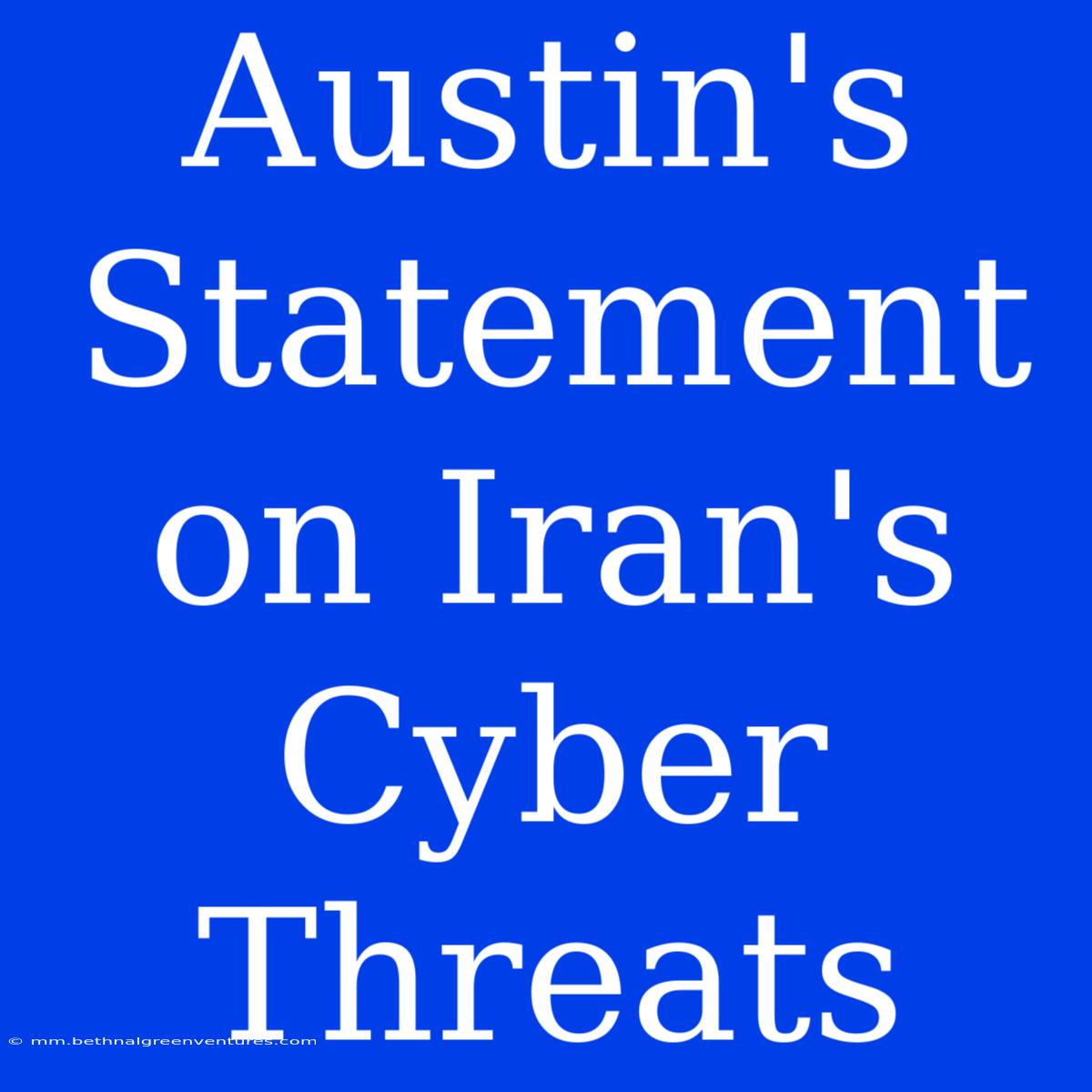Austin's Statement on Iran's Cyber Threats: A Warning and a Call to Action
Is the US adequately prepared for Iran's growing cyber capabilities? Austin's recent statement about Iran's cyber threats raises serious concerns and underscores the need for increased vigilance. Editor Note: This article examines Secretary Austin's statement on Iran's cyber capabilities, offering insights into the ongoing cyber threat and its implications for the US.
This topic is critical because it reveals a significant shift in the nature of international conflict. Cyber warfare is now a key element of national security, and understanding Iran's growing cyber capabilities is crucial for policymakers, businesses, and individuals alike. This article will delve into the statement, analyze Iran's cyber capabilities, and discuss the implications for the US.
Analysis: This article was created through a thorough review of Secretary Austin's statement, analysis of available reports on Iran's cyber activities, and examination of current cybersecurity best practices. The goal is to provide a clear and comprehensive understanding of the issue and guide readers in making informed decisions regarding their own cybersecurity.
Key Takeaways of Secretary Austin's Statement:
| Key Takeaway | Explanation |
|---|---|
| Iran's growing cyber capabilities | Iran's cyber program is rapidly developing, posing a significant threat to US national security. |
| Iran's willingness to employ cyberattacks | Iran has demonstrated a willingness to use cyberattacks to advance its geopolitical interests. |
| The need for a robust cyber defense | Secretary Austin stressed the importance of a robust cyber defense strategy to counter Iran's threat. |
Iran's Cyber Threat: A Growing Concern
Iran's cyber program has evolved significantly in recent years, transitioning from basic hacking to more sophisticated attacks.
Key Aspects of Iran's Cyber Threat:
- Advanced Capabilities: Iran has developed sophisticated cyber capabilities, including the ability to target critical infrastructure, financial institutions, and government networks.
- Motivations: Iran's cyber activities are often driven by political and economic motives, including retaliation for perceived injustices, disruption of US interests, and support for allies.
- Cyber Warfare Tactics: Iran has employed a variety of cyber warfare tactics, including denial-of-service attacks, malware distribution, and data theft.
Examples of Iran's Cyber Activity:
- The 2010 Stuxnet attack: This attack targeted Iran's nuclear program, demonstrating Iran's vulnerability to cyberattacks.
- The 2012 Shamoon attack: This attack targeted Saudi Aramco, wiping data from thousands of computers, highlighting the potential for significant economic damage.
- The 2017 NotPetya attack: While not directly attributed to Iran, some evidence points to potential Iranian involvement, showcasing the broader impact of international cyber threats.
Implications for the US: A Call for Vigilance
Secretary Austin's statement serves as a stark reminder of the growing cyber threat posed by Iran.
Key Implications:
- Increased Cyber Defenses: The US must strengthen its cyber defenses, particularly for critical infrastructure and government networks.
- International Cooperation: Collaborative efforts are essential to deter and disrupt Iran's cyber activities, including sharing threat intelligence and coordinating responses.
- Cyber Diplomacy: The US should engage in cyber diplomacy to establish norms of behavior and deter future attacks.
Steps for individuals and organizations to protect themselves:
- Implement strong passwords and multi-factor authentication: This reduces the risk of unauthorized access.
- Keep software updated: Regular software updates patch vulnerabilities that hackers can exploit.
- Back up important data: This ensures that data can be recovered even if a cyberattack occurs.
- Be cautious of suspicious emails and links: Avoid clicking on suspicious links or opening attachments from unknown senders.
Conclusion: Navigating the New Battlefield
Secretary Austin's statement highlights the growing cyber threat from Iran, emphasizing the need for proactive and comprehensive measures to counter it. The evolving landscape of cybersecurity requires constant vigilance, strategic partnerships, and innovative defense mechanisms to protect US interests and critical infrastructure. By understanding the nature of Iran's cyber capabilities and the implications for the US, individuals and organizations can take appropriate steps to enhance their security posture and contribute to a safer digital environment.
